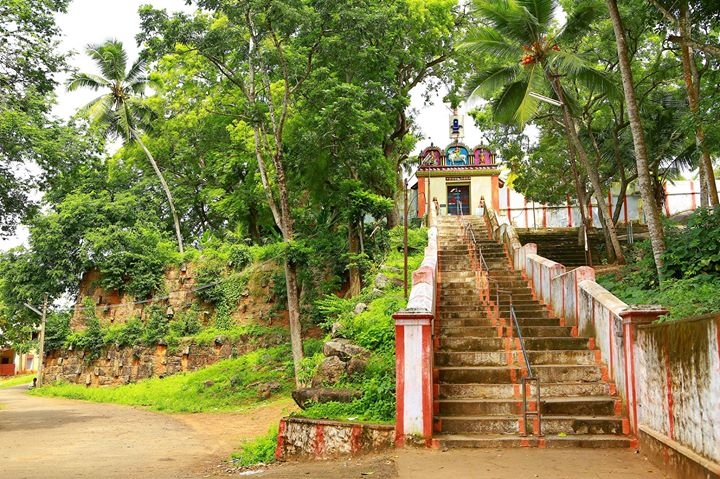Munchirai Sri Thirumalai Mahadevar Temple, Kanyakumari

Address
Munchirai Sri Thirumalai Mahadevar Temple, Kanyakumari Thirumala Temple Rd, Angavilai, Munchirai, Tamil Nadu 629171
Deity
Munchirai Thirumalai Thevar, Soolapani.
Introduction
- Location: Munchirai, Kanyakumari District, Tamil Nadu, India.
- Deity: The temple is dedicated to Lord Shiva, referred to as Munchirai Thirumalai Thevar and Soolapani.
- Significance: This temple is the starting point of the renowned Shivalaya Ottam, a pilgrimage run through twelve Shiva temples undertaken during Shivaratri. The temple features stone carvings dating back to the 11th century AD, during the reign of Rajendra Chola I.
Puranic Significance
- Endurance Across Yugas: According to Hindu mythology, this temple has existed through all four Yugas:
- Krita Yuga: Known as Sreesylam.
- Treta Yuga: Known as Swamy Sylam.
- Dvapara Yuga: Known as Bavyasylam.
- Kali Yuga: Known as Sivasylam.
- Scriptural Mentions: The temple is believed to be referenced in the Ramayana and Mahabharata, highlighting its ancient significance.
- Historical Connection to Thirumalai Nayak:
- Uthachi, the mother of Thirumalai Nayak, undertook penance near the temple to seek offspring. As a result, she bore a male child named after the deity. The nearby fort, known as Uthatchikkottai, can still be seen.
- Thirumalai Nayak is said to have presented a golden Angi (clothing) and crown, each weighing 182 tolas, to the deity during his visit to the temple.
- Sage Vyakarapadhar: Legend has it that Sage Vyakarapadhar worshipped Lord Shiva at this temple, adding to its spiritual heritage.
Beliefs
- Daily Rituals: The priests conduct various daily rituals including:
- Palliunartal (a ceremonial wake),
- Abhishekam (bathing of the deity) using milk, curd, ghee, honey, and tender coconut juice,
- Archana (offering prayers), and
- Neivedhyam (food offerings).
Special Features
- Architectural Evolution: Over time, the temple has undergone significant changes, with only the central shrine remaining from the ancient structure. The current architecture does not conform to any specific design principles, showcasing a unique style.
- Vimana Structure: The Vimana (roof) of the central shrine, containing the Garbhagriha (sanctum sanctorum), is a dominant feature of the temple and reflects early Chola architecture.
- Location and Access: Situated on a rocky elevation, the temple is accessed via a flight of 95 steps. The temple area covers approximately 1 acre 15 cents of land and faces east.
- Sculptural Adornments: The Vimana is adorned with intricate sculptures, and the Garbhagriha is built from granite. The temple features carved pillars and corridors reminiscent of the Chola architectural style.
- Additional Shrines: The temple complex includes two Srikoils (sub-shrines)—one dedicated to Lord Shiva and the other to Lord Krishna, located to the north of the Shiva temple.
- Granite Construction: The Siva Srikoil has a Garbhagriham and a Rishabha Mandapam entirely built in granite, with a roof topped by a sikharam (tower).
- Flag Staff and Nandi: The temple has a flag staff covered with copper sheets, a gold-plated Bali stone, and a small statue of Nandi.
Historical Inscriptions
- An inscription from the seventh regnal year of the Chola King Rajendra (1012-1044) identifies the principal deity as Munchirai Sabhayar.
- Historical references suggest that the temple was once a site of influence for Jain ascetics, inferred from the term Munchirai Sabhayar.
Pujas and Festivals
- To preserve the sanctity of the temple, various daily and monthly pujas are conducted.
- The expenses for these rituals and festivals are primarily supported by the Devaswom fund.
Century/Period/Age
11th Century AD
Nearest Bus Station
Vilavancode
Nearest Railway Station
Kuzhithurai
Nearest Airport
Thiruvananthapuram









